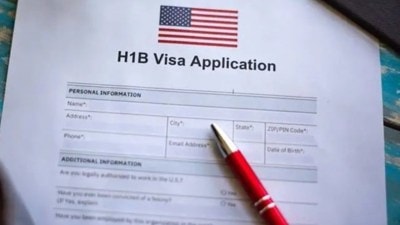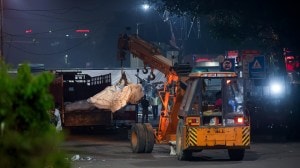In India,no tears for Kim Jong-il
Barring sections of the Left,few in India would shed a tear for Kim Jong-il. The departed North Korean dictator will be remembered for helping bring many Indian cities within range of Pakistani nuclear weapons
Barring sections of the Left,few in India would shed a tear for Kim Jong-il. The departed North Korean dictator will be remembered for helping bring many Indian cities within range of Pakistani nuclear weapons.
But the immediate concern in India,as elsewhere in Asia and the Pacific,will be about the potential for instability in the Korean peninsula amid the unfolding succession in Pyongyang,only the second in nearly six decades.
The chosen successor is the 24-year-old Kim Jong-un,youngest son of the now dead Dear Leader. Even the best-informed observers are not ready to affirm how secure he is,and where he might lead his isolated and despondent nation.
If the transition does indeed increase chances of conflict between North and South Korea,thereby destabilising the whole of East Asia,there might also be a slim chance for genuine peace and reconciliation in the peninsula.
Irrespective of which way the dice rolls,India is politically obliged to stand by the logic of its strategic partnership with South Korea,which has turned out to be one of New Delhis most productive engagements in Asia.
After diplomatic activism in the Korean peninsula in the early 1950s, Indias interest waned in the following decades. In the heyday of the non-aligned movement,India maintained a measure of neutrality between North and South Korea.
During the Cold War,India had diplomatic relations with both halves of the peninsula. Given the Souths alliance with the US and Indias tilt towards the USSR,Delhi cultivated some enthusiasm for the North.
At the end of the Cold War India was rudely awakened to an expansive nuclear and missile cooperation between the North and Pakistan. Although the collaboration began in the 1970s,it acquired a new momentum after Kim Jong-il took greater responsibilities at the turn of the 1990s and succeeded his father Kim Il-sung in 1994.
As part of a mutually beneficial arrangement,the father of the Pakistani nuclear weapons programme,Dr A Q Khan shared sensitive uranium enrichment technology (which he had stolen from western Europe) with North Korea. In return,Pyongyang transferred medium range missile technology to Khans labs. The result was the induction of the Ghauri missile with a range of 1,500 km into Pakistans nuclear arsenal. Pakistans missiles built with Chinese assistance were mostly of shorter range.
Linking the two states in South and East Asia was China,which had been patron saint for both Rawalpindi and Pyongyang. Beijing described ties with Pakistan as all-weather friendship,and its relations with North Korea were said to be as close as lips and teeth.
In 1999,Indian naval forces intercepted a North Korean ship carrying missile parts and blueprints for Pakistan.
Relations between Delhi and Seoul developed more slowly,but had a wider ambit. As India liberalised,South Korea became a major foreign investor. In the last few years,political engagement has expanded steadily.
India and South Korea now have a bilateral free trade agreement. Contacts between the defence establishments have begun to grow after the signing of a strategic partnership agreement in January 2010. Delhi and Seoul have agreed to launch civil nuclear energy cooperation this year.
Indias neutrality came to an end with Delhis condemnation of the loss of South Korean lives when North Korea sank a South Korean naval vessel in 2010.
India has a strong stake in the emergence of a unified Korean peninsula that is liberal,progressive and outward looking. India now has a rare opportunity to work with other powers,including the US,Japan,South Korea and even China,which had become very wary of Kim Jong-ils antics and brinkmanship in recent years,to promote a genuine reconciliation in the peninsula.
(The writer is a Senior Fellow at the Centre for Policy Research,Delhi.)



- 01
- 02
- 03
- 04
- 05




























